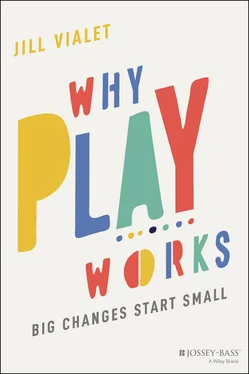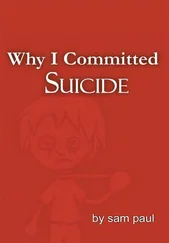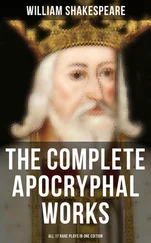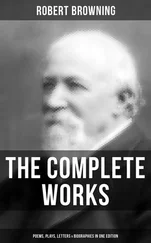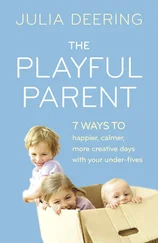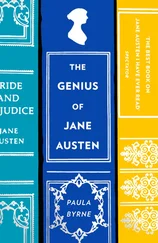This is why schools typically ask for Playworks’ help. Our staffperson is out at all the recesses being the grown‐up “in charge.”
At schools where timing allows, our coaches makes themselves available to support classroom teachers running games and physical activities either out on the playground or in the classroom. These smaller groups allow for students to learn the rules to new games, reinforce behavioral norms, and enjoy additional minutes of physical activity. In some cases, the classroom teachers and the coach are able to coordinate ways that Classroom Gametime reinforces classroom lessons, such as a collective running activity tied to mapping distances.
Junior Coach Leadership Program
This is our effort to ensure that kids really own recess. Ten to 12 students—usually fourth and fifth graders—are identified to work in teams supporting the flow of activities out at recess. This includes everything from distributing equipment to introducing new games, from providing oversight at different game stations to helping resolve conflicts when they arise. One thing about this program worth mentioning is that we make a concerted effort to ensure that it doesn't fall into the trap of just involving the “usual” leadership suspects. As you will see, part of the program's success has always stemmed from the diversity of its participants.
The Playworks sports leagues were initially launched to prompt greater involvement among girls, but it has evolved over the years to include an assortment of sports available for all students. We also expanded the offerings to include ongoing leagues in the traditional sense, along with weekend extravaganzas that allowed for short‐term competitions. The leagues are also the primary way we involve families and intentionally introduce competition into our programming.
* * *
The results of these efforts when taken together are really quite extraordinary. A randomized control trial—the gold standard of evaluations in which schools were randomized to receive Playworks and the outcomes were measured against comparable schools not engaged with us—found that students at Playworks schools felt safer (according to their teachers), engaged in more vigorous physical activity, were less likely to engage in bullying behaviors, and recovered instructional time with quicker, less fraught transitions. 1 Outcomes, it should be noted, that feel particularly relevant to this moment.
Playworks has weathered many storms since its inception, but recent events have left many of us reeling. As of this writing, kids, families and schools across the US are facing incredible challenges: a global pandemic that has closed many of our schools and a social reckoning that has exposed the institutional racism that our country is built on. In summer 2020, in response to school closings, I worked with staff to write The Playworks School Re‐Opening Workbook , which we made available as a free ebook. 2 Summer 2020 was also a time of tremendous racial upheaval in the United States, sparked by the murders of George Floyd and others. On the surface, the Re‐Opening Workbook was an effort to offer some tools and a framework for educators to think about how they wanted to come back; however, the writing of it raised a deeper question. Specifically, what might play teach us about doing things differently after schools reopen?
Although play may be the furthest things from our minds when our children's basic education feels threatened, I'm here to say that it is essential for growing kids who are kind and compassionate, able to solve problems, and community oriented. Prioritizing play is critical because these are the very attributes we need for turning things around now and navigating our increasingly complex world.
Play is uniquely well suited to encourage and support human connection. Play has, in fact, survived evolution despite being a “risky” behavior, precisely because it teaches us how to navigate the kind of social connection that is needed right now.
Play also creates many opportunities for redesigning what we want our schools to look like. Considering this moment as a global transition, play offers tremendous lessons for promoting inclusion and belonging. It also makes plain the importance of agency, trust, and their connection to the processes of establishing rules, rituals, and ways of gracefully resolving disagreements. Play teaches us that it matters how it feels , and that focusing on that in school reopenings—for everyone involved—will be critical to our ultimate success.
Writing the Re‐Opening Workbook also reminded me of all the many different people who have been part of the Playworks story. So, in writing this book, I reached out to lots and lots of people: folks who had worked at Sports4Kids in the early days, as well as people who had joined when we had already made the shift to calling ourselves Playworks. I talked with principals who had had our program, to researchers who had studied our program, and to funders who had supported our program. My hope was that in talking to the people who knew us best, I could come to better understand why play works.
This book is the result. The stories and lessons learned from 25 years of bringing play to schools all across the country (and in Ireland as you will read) provide the backbone of this effort to share one profound insight: play has the power to bring out the best in people . This book is not intended to be a history of Playworks, but rather a collection of insights about play that I hope will be inspiring and helpful for anyone who has power or influence over children's access to safe and healthy daily play. My hope is that in reading this book you will come to understand why prioritizing play is so important, not only to the individual child but also to our collective well‐being.
Why Play Works looks at play through our experience as an organization and through our observations as facilitators of play. This book also asks us to reconsider how we have been doing things, and how we might do these things better. The future is uncertain. This book is an effort to inspire and support a shift in our educational system to focus more deeply on teaching the skills that are essential to thriving in a democracy—the abilities to navigate social connection, to have respectful conflict, to learn from mistakes, and to win graciously. It is also a declaration that play is critical to achieving this seismic shift and that big changes start small.
I imagine that if you're reading this book, it's because you already have an intuition that play is far more influential than we usually acknowledge. Maybe you've had a striking play experience with your own kids—or your students or the young athletes you coach—and now you're trying to make sense of it. Maybe you're hoping to figure out how you might intentionally tap the power of play—or to convince other grown‐ups of what you've discovered. In any and all of these situations, Why Play Works is for you.
Why Play Works is organized into three main sections. It starts out with a brief exploration of the theory and the science behind the power of play and the surprisingly challenging task of actually defining play . I can imagine that some of you might be tempted to skip over this seemingly academic opening, but I'd encourage you to at least skim it. This section is really the foundation of understanding why you should care about play and provides some persuasive ideas for anyone who is trying to convince others of play's importance.
The second section, and really the heart of the book, is made up of Twenty Big Changeswhere play can offer a powerful small start. The book digs into the role of play in creating social norms, promoting social connection and physical activity, along with the relationship among play, safety, risk, and learning. The Playworks experience provides a great springboard for exploring play and leadership (primarily through the lens of our Junior Coach Leadership Program), and lessons learned from running sports leagues offer a chance to consider the issues of gender, competition, and the role of families. Throughout the book I've tried to illustrate how play can serve as a powerful lever of design in creating intentional teaching and learning moments. I also look at how play can work in conjunction with space and place, including the regional differences we've encountered bringing Playworks to new cities across the US, in expanding our efforts to Ireland, and most recently translating our approach to work virtually. Finally, I've included thoughts on the change that is possible through the connection between race and play, and the role of play in healing.
Читать дальше
